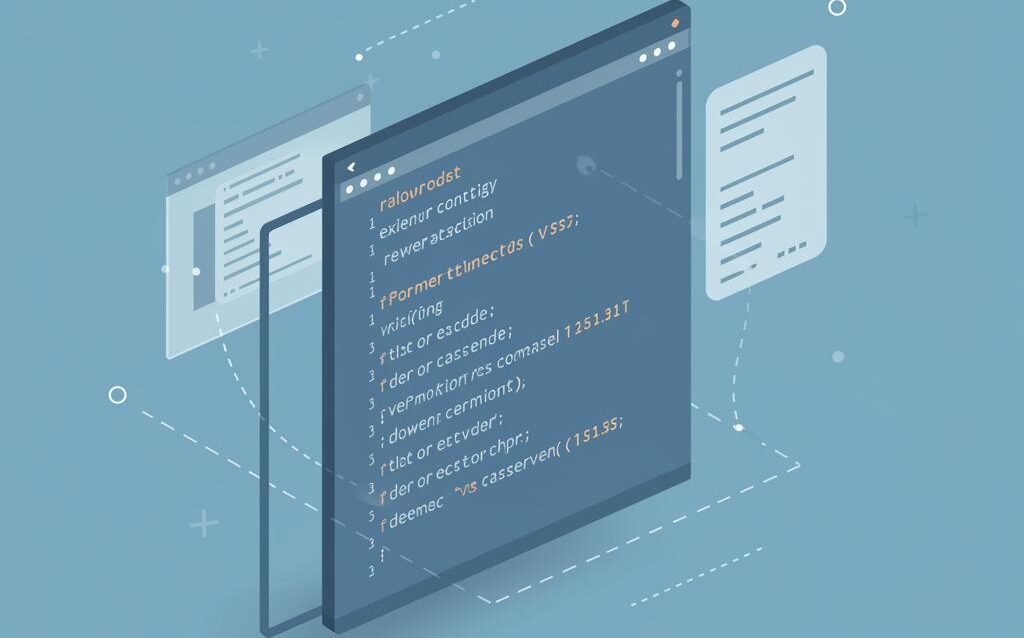Documentation as Code: Git for Technical Docs
Documentation as Code: Managing Technical Documentation in Git
In the modern software development landscape, documentation often lags behind code. This can lead to outdated, inaccurate, and ultimately, unhelpful documentation. “Documentation as Code” (Doc-as-Code) is a philosophy and practice that treats documentation with the same rigor and processes as source code. This means leveraging version control systems like Git, automated build processes, and collaboration workflows to create and maintain documentation. This post explores the benefits of Doc-as-Code and provides practical guidance on managing technical documentation in Git.
Why Embrace Documentation as Code?
Adopting Doc-as-Code offers several significant advantages:
- Version Control: Track changes, revert to previous versions, and understand the evolution of your documentation.
- Collaboration: Enable multiple contributors to work on documentation simultaneously and efficiently through pull requests and code reviews.
- Automation: Integrate documentation build processes into your CI/CD pipeline, ensuring documentation is always up-to-date with the latest code changes.
- Consistency: Enforce style guides and standards to maintain a consistent look and feel across all documentation.
- Improved Quality: Benefit from peer review and feedback, leading to more accurate and comprehensive documentation.
Setting Up Your Documentation Repository
Choosing a Documentation Format
The first step is selecting a suitable documentation format. Popular choices include:
- Markdown: Simple, lightweight, and widely supported. Excellent for basic documentation and quick edits.
- reStructuredText: More powerful than Markdown, with features like directives and roles. Often used with Sphinx for generating documentation.
- AsciiDoc: Another markup language with a focus on semantic correctness and readability. Supports complex document structures.
- YAML/JSON (for API Documentation): Often used with tools like Swagger/OpenAPI to define and document APIs.
The best format depends on your project’s complexity and requirements. Markdown is a great starting point for many projects.
Structuring Your Repository
A well-structured repository makes it easier to navigate and maintain your documentation. Consider the following structure:
/docs
/introduction
introduction.md
/tutorials
/getting-started
getting-started.md
/advanced-topics
advanced-topics.md
/api
/endpoints
endpoint1.md
endpoint2.md
/images
image1.png
image2.jpg
.gitignore
mkdocs.yml (or similar configuration file)
This structure provides a clear organization based on document type and topic.
Ignoring Unnecessary Files
Use a .gitignore file to exclude build artifacts, temporary files, and other unnecessary files from your repository. This keeps your repository clean and focused on the documentation source.
Workflow for Managing Documentation in Git
Branching Strategy
Adopt a branching strategy similar to your code development workflow. Common strategies include:
- Main/Trunk-based Development: All changes are committed directly to the main branch. Suitable for small teams and projects.
- Feature Branching: New features and changes are developed in separate branches and merged back into the main branch via pull requests. Recommended for larger teams and complex projects.
Regardless of the strategy, always create a new branch for significant documentation changes.
Pull Requests and Code Reviews
Treat documentation changes like code changes. Use pull requests to propose changes and request feedback from other team members. Code reviews help ensure accuracy, consistency, and adherence to style guides.
Automated Builds and Deployment
Integrate your documentation build process into your CI/CD pipeline. This ensures that documentation is automatically built and deployed whenever code changes are merged. Tools like Sphinx, MkDocs, and Docusaurus can be used to generate static websites from your documentation source.
Example using MkDocs:
- Install MkDocs:
pip install mkdocs - Create a
mkdocs.ymlconfiguration file. - Run
mkdocs buildto generate the static website. - Deploy the generated website to a web server or hosting platform.
Best Practices for Documentation as Code
Establish a Style Guide
A style guide ensures consistency and readability across your documentation. Define guidelines for writing style, formatting, terminology, and code examples.
Use a Documentation Generator
Documentation generators automate the process of creating static websites or other output formats from your documentation source. This simplifies the build process and ensures consistency.
Automate Documentation Testing
Implement automated tests to verify the accuracy and completeness of your documentation. This can include:
- Link checking: Ensure all links in your documentation are valid.
- Spell checking: Identify and correct spelling errors.
- Grammar checking: Improve the grammar and clarity of your writing.
- Code example verification: Verify that code examples are correct and executable.
Keep Documentation Close to the Code
Ideally, documentation should reside in the same repository as the code it describes. This makes it easier to keep documentation up-to-date with code changes.
Embrace Continuous Improvement
Documentation is never truly finished. Continuously review and update your documentation based on user feedback and code changes.
Conclusion
Documentation as Code is a powerful approach to managing technical documentation. By treating documentation with the same rigor as code, you can improve its quality, accuracy, and maintainability. Embracing Doc-as-Code requires a shift in mindset and the adoption of new tools and processes, but the benefits are well worth the effort. By leveraging Git, automated build processes, and collaboration workflows, you can create documentation that is a valuable asset to your project.

